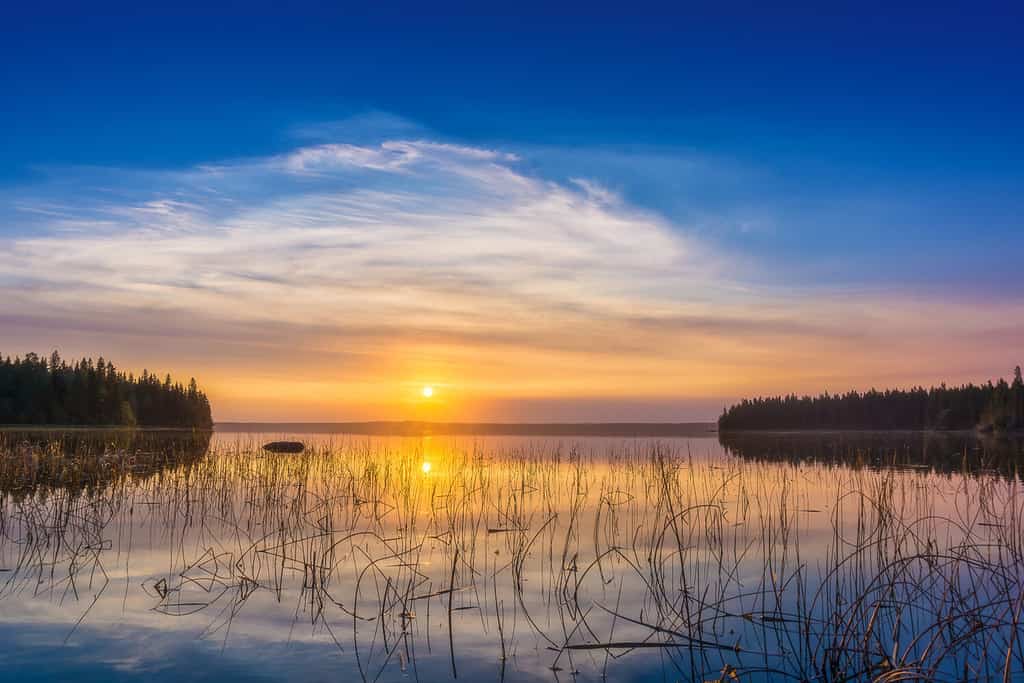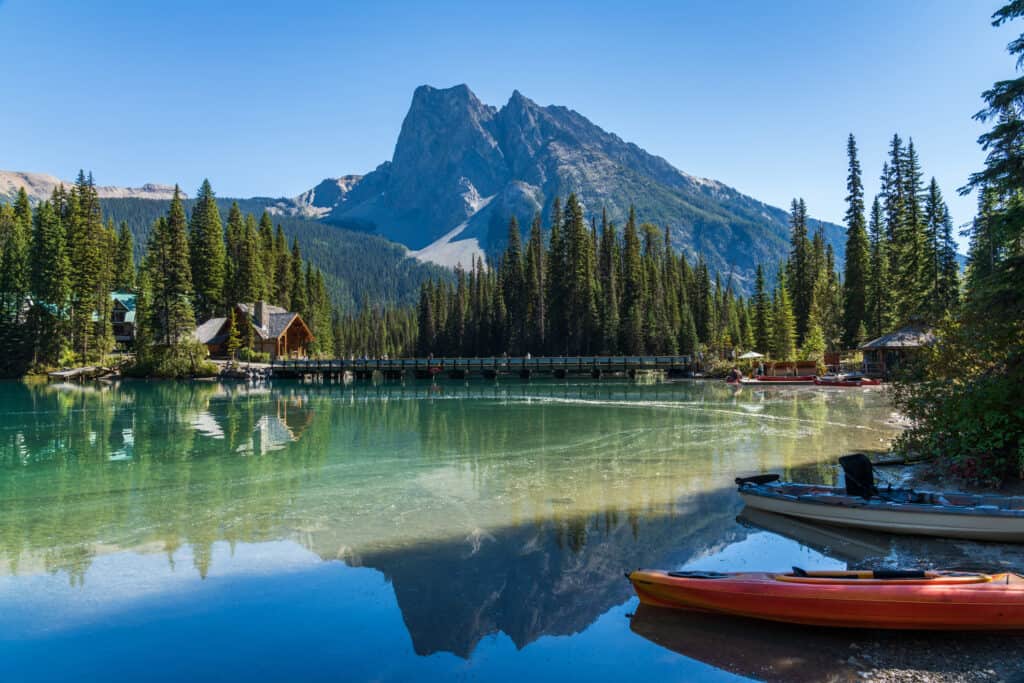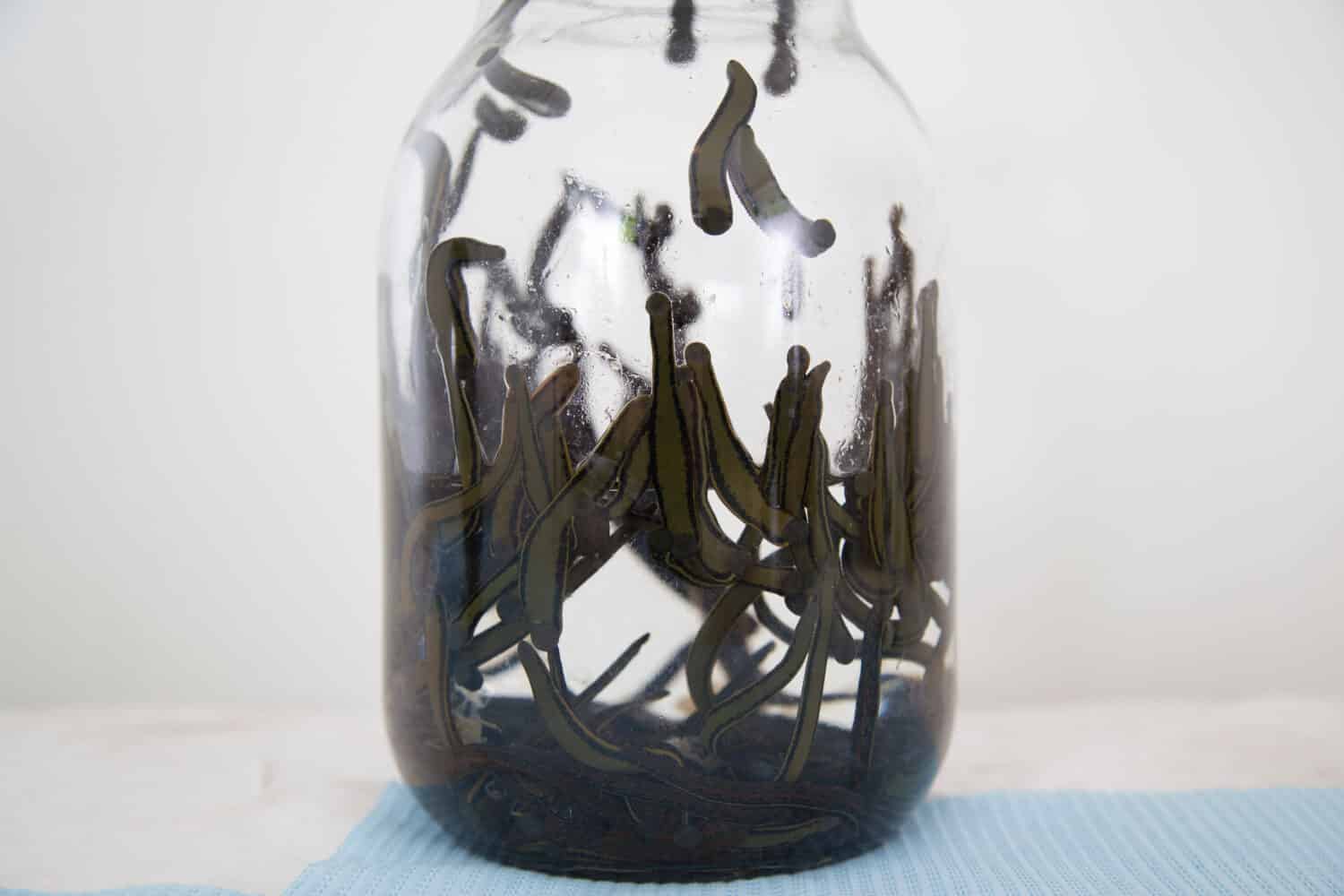Leeches are related to segmented worms in the phylum Annelida, like earthworms. They are frequently found in fresh water like lakes and ponds throughout America and Canada. With a sucker at each end and a reputation for being bloodsuckers, leeches can make anyone shudder at the thought of being latched onto by these creepy creatures. If you’re curious about what lakes in Canada (or in America) you might find some of these sticky worms, look no further!
1. Rosebary Lake

Rocky areas located off the lake are prime spots to find leeches, even if you’re not looking!
©Michael J. Eves/Shutterstock.com
Rosebary Lake located in Ontario has plenty of sandy, rocky little beach areas where people can enter the lake to swim or fish. These shallow areas of warm water are the most likely places you’ll find leeches. Disturbances in the water are attractive activities to them, so human movement common in the shallow waters along beaches or lake/pond entry points definite hotspots. Avoid damp vegetation stands if you’re not looking to have a few slippery tagalongs for the rest of the day.
2. Tim River

Calm and sandy shores of rivers, lakes, and ponds are the areas you’ll most likely encounter these “sucky” animals.
While not a lake, Tim River runs through Ontario, Canada, and flows into Rosebary Lake. Some areas of this lake are hotbeds for leeches, especially calm areas where water collects. While it’s not known for sure how many of the 73 leech species found in Canada can be found in this river, they are definitely active in Canadian ponds, rivers, and lakes. This shouldn’t deter you from stepping foot in any body of fresh water, though. Moving out of standing water or shallow areas reduces the likelihood of leeches being around. Also, you can apply oils like eucalyptus or lemon oil to your skin. This doesn’t harm the leeches, but it does deter them from you thanks to the strong odor.
3. Hawkins Lake

No matter the lake you go, it’s likely there are some species of freshwater leeches somewhere around.
©Joel Sparks/Shutterstock.com
Saskatchewan, Canada, is home to Hawkins Lake, an area commonly used for swimming and boating. You’ll most likely find these suckers near the sandy or grassy areas leading into the water. Standing knee deep in this lake can be enough to attract a few of these worm-like animals to latch onto you using their sucking mouthparts. Protecting your body by wearing thick and tight-fitting clothing in the water is a pretty fool-proof method to avoid leeches.
4. McCraney Lake

If you’re a seasoned lake-dweller, it’s likely you’ve encountered your fair share of leaches.
©iStock.com/CHENG FENG CHIANG
Another Ontario lake, McCraney Lake is a popular site where camping, canoeing, and swimming are common activities. These activities (aside from camping) have a high possibility of leading to a leech-filled encounter as many locals will say. The deeper into the large lake you go, the lower the chance of encountering a leech. This is, again, due to the fact that they tend to prefer warm and shallow areas.
If you’re canoeing, boating, or kayaking, you’re very unlikely to have to deal with leeches. Even if you’re in leech-infested waters!
Common Concerns About Leeches

Leeches are commonly brown or black and will often have colorful spots or stripes on their backs.
©iStock.com/kimetan
When one thinks of leeches it typically conjures up thoughts of blood-sucking parasites. It turns out most leeches found in freshwater areas of North America are not the blood-sucking variety. Most species get their food from feeding off small larvae, decaying materials, and other invertebrates. Some species do feed off blood, but this blood can come from fish or other non-human mammals. They are not blood-thirsty predators.
This still might not be comforting if you’re squeamish to the thought of a leech sticking onto you after a dip in your favorite watering hole. If you do get stuck with one, try not to freak out. They are easily removed using a piece of paper, a thin piece of plastic, or your nails. Try to locate the head which is the slimmer end of its tube-shaped body. Then, remove the critter from your body by pulling the skin taut and gently separating its head from your skin. You might encounter some bleeding. After the leech is removed, clean the wound and apply a clean bandage. What you don’t want to do is salt the leech or attempt to burn it off. This increases the risk of introducing bacteria from the leech’s body into your wound.
Worried about contracting a disease? Leeches are fortunately not known to carry and transmit diseases, and can even be used medicinally! If the animal is properly removed and the wound is cleaned afterward you are unlikely to contract any sort of disease or infection from the “bite” of a leech.
Thank you for reading! Have some feedback for us? Contact the AZ Animals editorial team.








